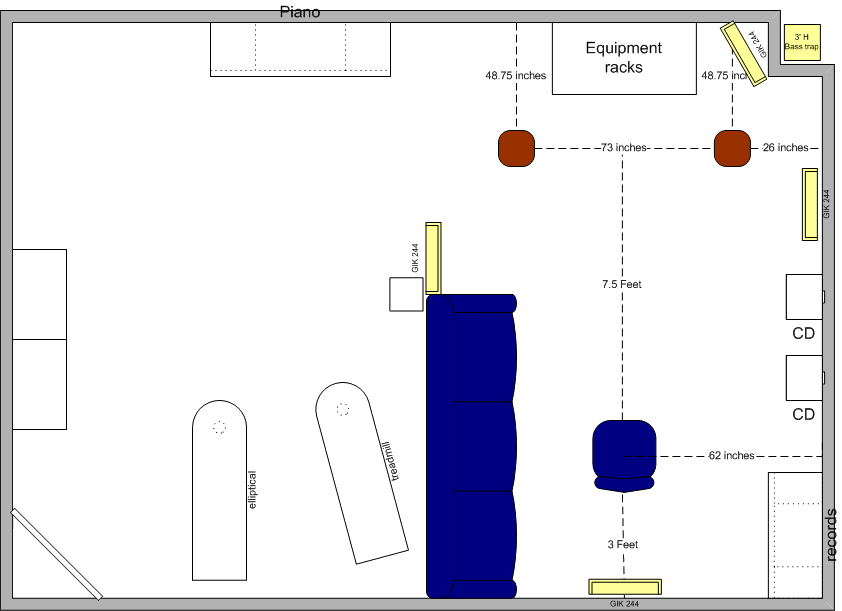Here's a BMP schematic of my current basement room. The space on the left is our exercise area. The stairway is behind the piano. The space on the right is my "dedicated audio area". There is a 8" x 8" soffit on the right and bottom cieling walls below the drop ceiling. The total room dimensions are 16 ft long, 22.5 ft wide, 7.5 ft high (2700 sq ft).

I hope this image is large enough to see the measurement details for speaker placement and seating location. If not, the speakers are 48.75" off the back wall (measured to the speaker front), the righ speaker is 26" off the side wall (to tweeter center). I am sitting 7.5 feet from the speakers, 36 inches from the back wall and 62 inches from the side wall. (I have records racked to the ceiling on my right.) The speakers are MTM's, with two 8" Scanspeak Kevlar drivers and 9300 tweeter, firing almost straight forward (perhaps a 5 degree toe in).
The mode calculators show problems at the following frequencies:
75.3 - 150.5 - 176.4 - 225.8 (less so at 250, 282, 301, 352, 276)
Yes, I do notice that these are esentially multiples of 75, the height frequency.
These other frequencies show tangential problems:
83 - 103 - 228 - 303
Obviously bass damping is in order here, especially since my speakers are rear ported. If I plug the ports the reinforced frequencies definitely quiet down, but the dynamic is lost and it just doesn't sound balanced anymore. I have the CD cases at the 1st reflection point acting as diffusers (which actually seems to be working fairly well - the imaging is good).
So, anything else that I should worry about or that you would recommend?
Thanks for all your help.
Bob